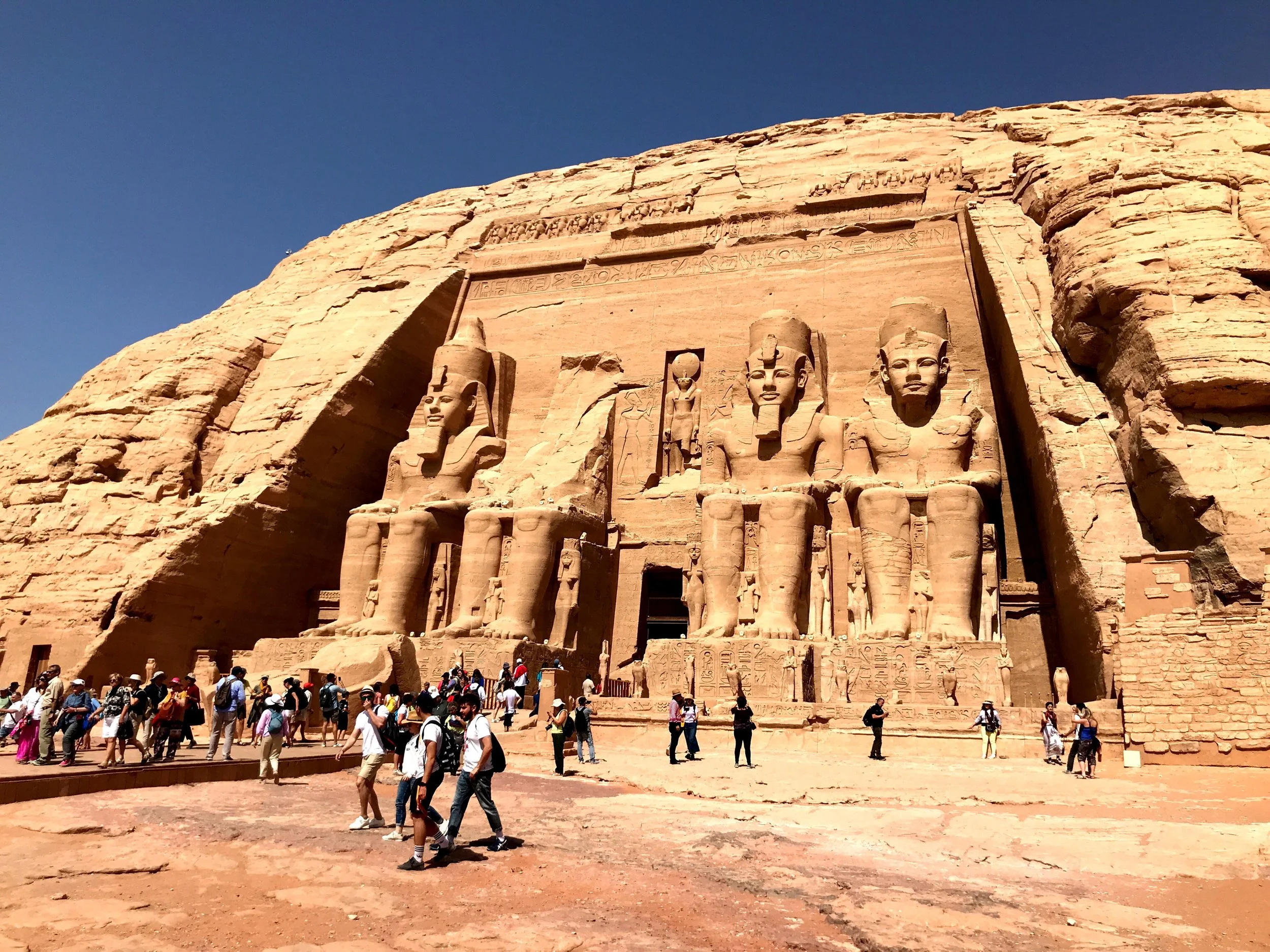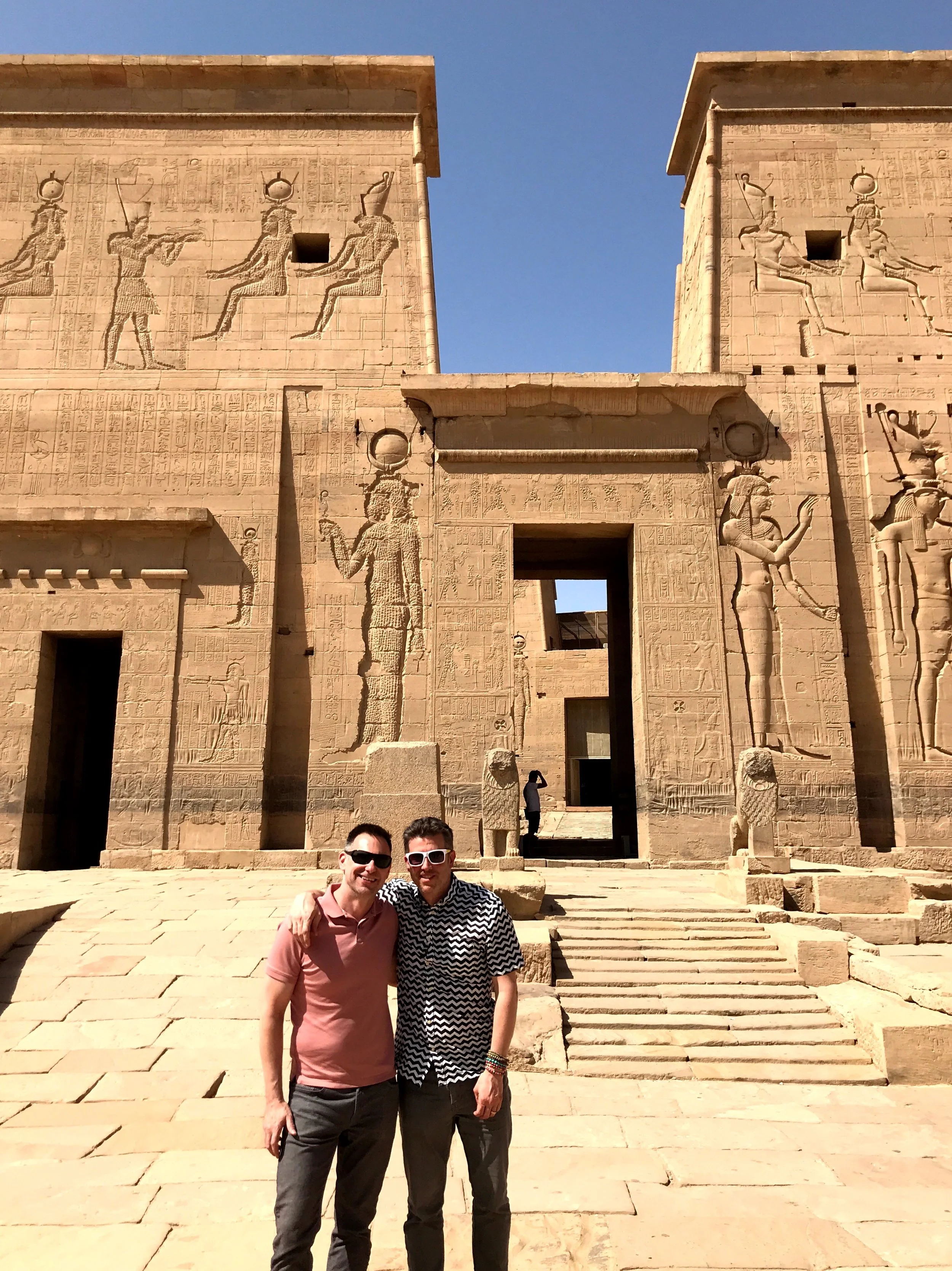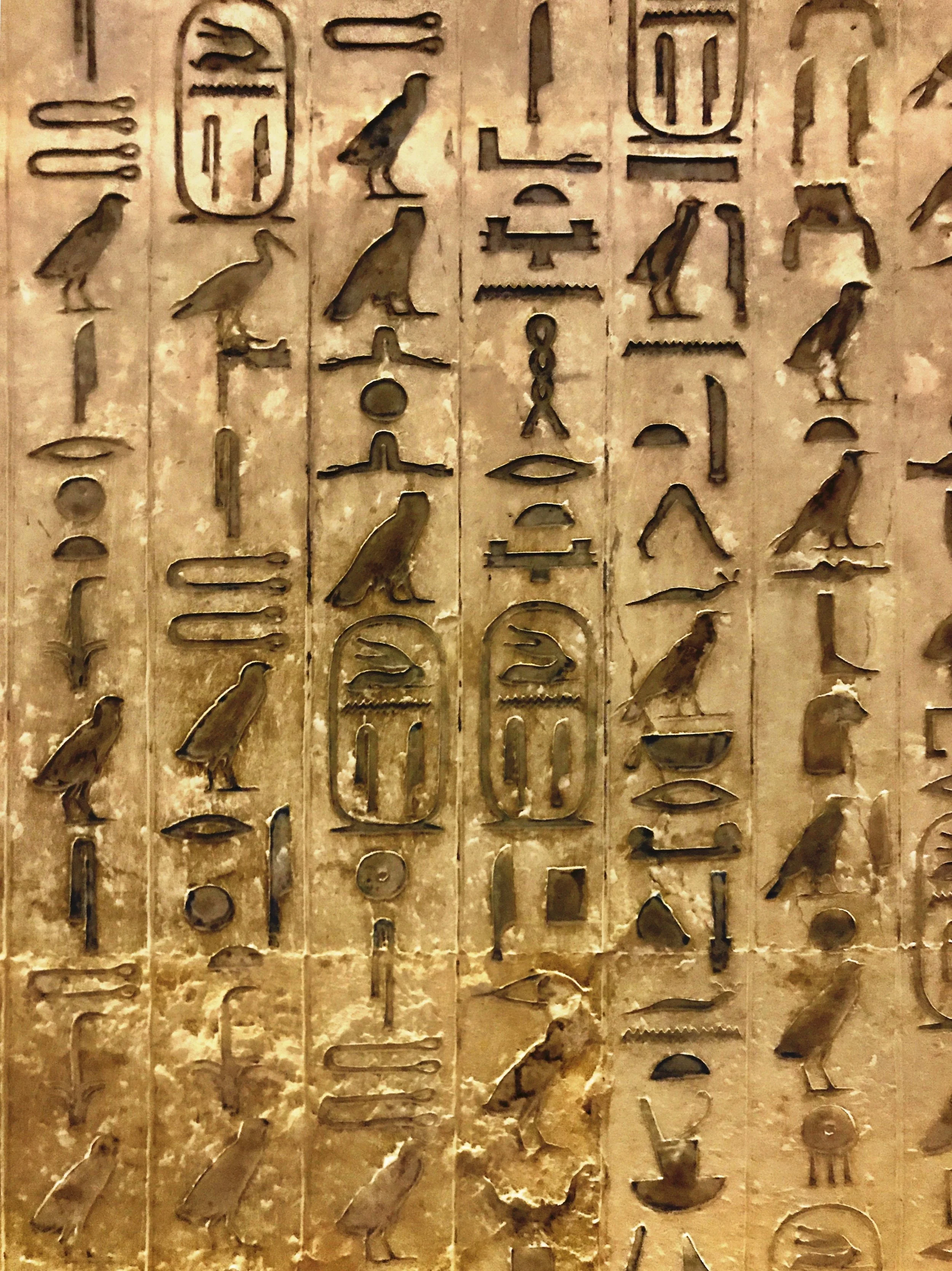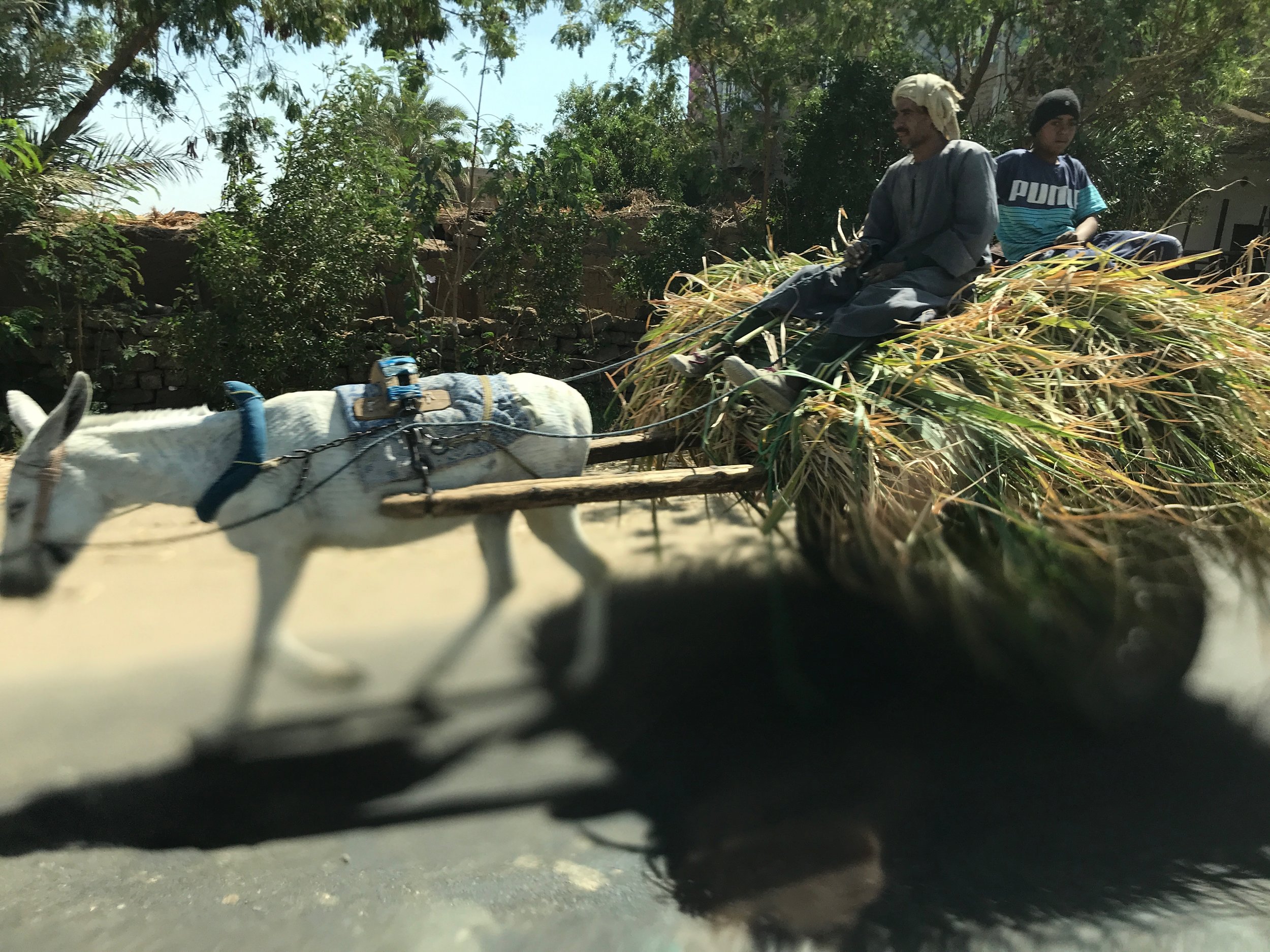How to get a visa for Egypt, navigate a police state, exchange money, and be able to take photos in the temples and tombs. Oh, and why you need small bills to go to the bathroom.
Egypt is a trip of a lifetime — but you have to know what to expect. Here Duke and Wally are set to explore the Temple of Philae in Aswan, one of the best-preserved ancient sites
Egypt isn’t an easy country to navigate — Cairo in particular. It just doesn’t have the sophisticated tourist infrastructure so common in other parts of the world. Plus, it’s essentially a military dictatorship. In many ways, it reminded us of traveling through India, just on a smaller scale.
That being said, Egypt has a mind-boggling amount of temples and tombs to explore. They’re some of the oldest structures on the planet and are remarkably well preserved, having been buried in the sand for thousands of years.
“We watched temple guards grab the phones of people who hadn’t bought a photography pass and force them to delete their photos!”
Here are 21 tips to help you prepare for a trip to Egypt.
1. If you learn one word, it should be “shokran,” thank you.
When you say this, some people will burst into a huge smile. “You speak Arabic?!” one man exclaimed, joking. It’s great that something so simple can bring so much pleasure. And it goes to show how few travelers — or should I say tourists? — take the time to even bother learning one simple word.
Here’s another easy word: Salaam. It means “peace,” and works as both a greeting and a farewell.
Do you dare wear short shorts? Yes, it’s hot in Egypt, but respect the culture
2. Follow the dress code.
It’s not mandatory (there aren’t any morality police like in Iran), but do you really want to be the tourist that disrespects the culture of the country you’re visiting?
For men, T-shirts are OK, and I suppose you can get away with wearing shorts, but why? You won’t see a single Egyptian wearing them. Just bring along a couple of pairs of lightweight pants. Maybe it’s time to invest in a pair of linen pants, which travel extremely well.
For women, you don’t have to wear a headscarf — in fact, plenty of local women forgo this. Just cover your shoulders and wear pants or long skirts and dresses, preferably to the ankle. Again, you can get away with less coverage — heavens knows Egyptians see all sorts of lack of modesty at tourist attractions — but why be that person?
3. Pack sunblock.
Cuz it’ll be sunny, dusty and hot. Very hot. It reached 100 while we were there in late April.
4. It should go without saying that you shouldn’t drink the water.
Always have bottles of water to stay hydrated and to brush your teeth. You may not think that you’re getting dehydrated, but trust us, this can happen swiftly, and heat exhaustion is no joke. Duke suffered a mild case of this which caused him to have prickly heat, lightheadedness and diarrhea, which is no fun when most of Egypt’s sites are in the blazing sun.
5. Upper Egypt is the south part of the country, and Lower Egypt is the north.
Yes, this is counterintuitive to the modern brain. But the River Nile flows northward, so the Ancient Egyptians’ perception of the world was the reverse of ours.
6. You have to stake your ground in lines.
If there are any gaps, people will weasel their way in and have no qualms about cutting in front of you. While waiting in line for customs, a woman behind us kept tapping my backpack to get me to move up, as if pressing into each other would make the line go faster. Eventually, Duke and I formed a line with an annoyed fellow American to block the path of anyone trying to barge past us.
This happens on planes, too. I’m not saying Americans are the models of decorum, but when it comes to disembarking from a plane, no one would ever consider rushing up the aisle. We very patiently wait our turn and let everyone sitting in front of us get off before us. Not so in other parts of the world, including the Middle East. You have to rush into the aisle to prevent fellow passengers behind you from rushing ahead.
7. Getting a visa upon arrival is ridiculously easy.
No paperwork. Just US$25 and you get a sticker.
For other countries we’ve traveled to, like Vietnam and Cambodia, we had to send out our passports to the embassies in Washington, D.C., putting our faith in the U.S. Postal Service. India’s was an even more-elaborate affair, requiring a picture to be taken.
But the visa for Egypt can be purchased at a bank kiosk to the right of the line for customs.
8. It’s a good idea to get a data plan for your cell phone.
Not that we had great luck with Uber in Cairo (we thought we’d never escape from the Khan el-Khalili souk, after waiting for a couple of hours for various Uber drivers who never arrived). But we communicated with our guide service via email, and Wi-Fi was spotty at one of our hotels.
9. Prearrange pickup from the airport.
A mass of guys in navy blue jackets will call out, trying to get you to take their taxi. We like to have our hotels pick us up.
If you do need to get a cab, negotiate the price before you get in. When we returned to Cairo from Luxor, a charming man who played Western pop music took us to the Mena House for 400 Egyptian pounds, while the hotel was going to charge about 1,300 L.E.
Get used to seeing policemen and soldiers toting semi-automatic machine guns everywhere you go, including the gorgeous Dendera Temple
10. There are machine guns and metal detectors everywhere you go.
You’ll see them at the numerous military checkpoints on the road and outside tourist locations. It’s unnerving to see the tip of a machine gun peeking out a window in a small square tower as you drive down the street or enter the grounds of a temple.
It certainly was the first time we had to go through metal detectors as we entered our hotels. You’ll probably set them off, but they’ll wave you through.
When you’re visiting a site, there’s usually a bin or flat surface to place your cell phone before you pass through. If you’re bringing a bag, expect to have it screened.
The machine guns it seems every police officer and military personnel carry are made of tarnished silver, like something from generations past. And despite their toy-like appearance, resembling what you would play at a shooting gallery on a beachside boardwalk or a traveling carnival, I don’t doubt their lethal power.
11. Don’t expect to get a lot of money out of ATMs.
They’re certainly not as common as in the States, which is to be expected. But the maximum amount you can withdraw is 3,000 Egyptian pounds, or about $175 at the time we visited.
Sometimes the ATM would reject this selection — maybe there wasn’t enough money left — so we’d try 2,000, which usually worked.
The Egyptian pound is abbreviated as L.E., from the French livre égyptienne.
Resist touching the walls: The oil from our skin darkens stone carvings, like these hieroglyphics
12. As tempting as it may be, don’t touch the temple walls.
You can see the dark, shiny stains where people have touched certain spots too often. Our guide in Cairo, Ahmed, saw a guy touch the walls of a tomb, and he told him not to. “You’re breaking my heart,” he said, then grumbled to us, “They wouldn’t go to the Louvre and touch the paintings!” He did have a point. These structures have survived thousands of years and still sport their original paintings. Let’s help preserve them for another thousand years.
I know, I know. Wally’s not following his own advice — he’s touching the carvings!
13. Get small denominations (especially 5 L.E. bills) cuz you’ll need ’em to go to the bathroom.
Almost every WC (as they’re usually marked, from the Britishism water closet), has someone out front collecting payment of 5 L.E.
Fives are also handy to tip small amounts to someone who helps you in a small way, like a bellboy.
Hopefully you’ll luck out with a friendly, knowledgable guide like Mamduh
14. Hire guides everywhere.
There are security checkpoints all over the country, where they record the license plate, telephone number and other information in a ledger. (We always heard the term “Amrikiya,” which I assume meant we were Americans.) These checkpoints are facilitated with a guide and driver. I’m not even sure you could get into sites without a guide.
Plus, you know, it’s nice to know what you’re actually looking at. By the time we had spent a week with Mamduh from Egypt Sunset Tours, Duke and I felt like minor Egyptologists.
Added bonus: The vendors might be a tad less pushy. If you don’t have a guide, I imagine you’d be picked apart like a vulture with carrion. As it is, you’ll still have to ignore endless entreaties from shopkeepers inviting you to their stand, hoping to make a sale.
The roads are much less crazy outside of Cairo, but you’ll still be sharing them with a variety of transportation, including donkey carts
15. Egypt is definitely one of those countries where driving is insane.
Horns honk nonstop and pedestrians walk in the street, crossing traffic without a care in the world. I watched a woman with two small children talking on her phone cross a busy street without even a glance at oncoming traffic.
In Cairo in particular, drivers act like they’re playing a real-life video game, narrowly dodging other cars, horse-drawn carts, auto rickshaws, trucks loaded with produce, donkeys and motorbikes, often with a woman on the back sitting sideways, a child in her arms.
Cars come from all directions, and there aren’t any lines on the road. Vehicles speed along, weaving between traffic, straddling two lanes, zooming along at an alarming clip. At night many don’t even use their headlights.
16. Most sites have an extra photography pass you can buy — though a lot of tour guides fail to mention this.
If you want photos, just ante up the 50 to 300 L.E. or so and get the pass. If you don’t, be warned that the guards can be ruthless. At Abu Simbel, for instance, we watched them take the phones of people who didn’t buy a pass and force them to delete their photos! Fortunately for us, our guide Mamduh always asked us prior to purchasing our tickets.
17. Just because you pay for a car for the day, doesn’t mean you get to go wherever you’d like.
The concierge at our hotel in Cairo said we had a driver and guide for the full day, from 8 a.m. to 4 p.m. But we learned that unlike other places you travel to, you’re limited to their itinerary and can’t go off script.
Our guide, Ahmed, made our experience extremely unpleasant, rushing us through the sites of Giza and Saqqara, until we said we had come all this way and wanted to see everything we could. He refused to take us to the Mena House for lunch, telling us that it was ridiculously spendy (and even though we had discussed this with the concierge at the Kempinski the night before) or any other sites, even though we still had hours left.
What’s strange (I’m being sarcastic) is that he would have made the time to stop at the papyrus and perfume shops at Giza, or the carpet schools at Saqqara, if we had accepted his offer. Having suffered through these tourist traps, where guides get commission if you buy anything, we knew to avoid them like the 10 plagues.
18. They don’t believe in seatbelts in Cairo.
Very few drivers bother to wear them, and not many of the backseats have working seatbelts, especially in Cairo. There’s nothing you can do but pray to Osiris or Allah that you’ll safely reach your destination amidst the chaos of the roads.
Thankfully, the other parts of the country we visited, Aswan and Luxor, tended to have working seatbelts — though our driver only slipped his on when we reached military checkpoints.
19. You’ll see a lot of Egyptian men with dark circular marks on their foreheads.
At first we thought these gray smudges might be ash — we visited over Easter and figured it might be some Coptic Christian tradition — but after a while I realized it was the type of mark you’d get from repeatedly rubbing your forehead against something. I suspect it’s a mark from prostrating themselves and bowing their heads to the ground five times a day during their prayers. I imagine some wear it proudly as a public display of piety.
Duke learned this mark actually has a name: zebibah, or raisin. (Given its size, it’s actually more like a prune.)
The one downside to staying on the West Bank in Luxor were the ever-present flies
20. Get used to flies.
They’re everywhere, especially in Luxor. We noticed a slew of small red bites on our lower legs the morning after our first night on the West Bank, and although we didn’t see any mosquitos, they were obviously there. So you might want to pack some bug spray, too. We used Repel 100, which kept those pests at bay.
21. Not to be rude, but you should expect to smell B.O. quite often.
It’s obviously most noticeable in confined spaces like an airplane or a car. This isn’t a dig at Arabs — I suffered through many a stinky bus or metro ride in Europe, believe me. –Wally




























